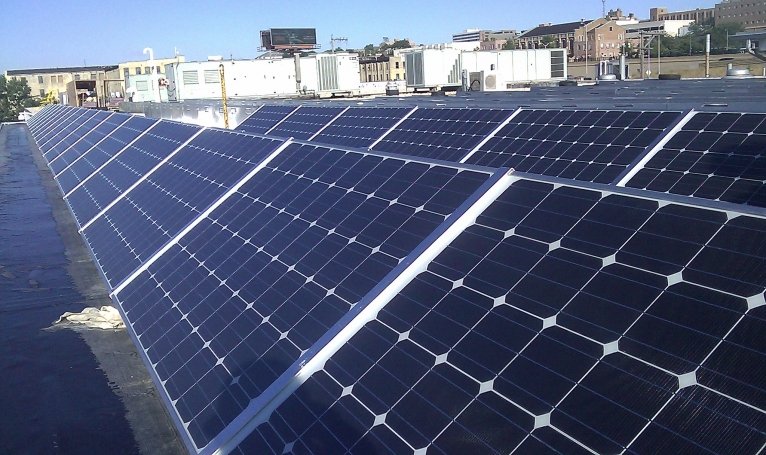(Source: Southgate ARC)
The Netherlands national amateur radio society VERON reports on the pollution problems caused by Solar Panels installed on homes
Electrical systems such as solar panel installations must comply with EMC (Electro Magnetic Compatibility) standards. That means that there is a limit to the electromagnetic fields (EMF) that an electrical system, such as the combination solar panel and inverter including cabling, may emit.
However, a 2014 study in 14 European countries by the EMC Administrative Cooperation Working Group found this emission limit is more often than not exceeded.
Read the full story in Google English at
http://tinyurl.com/VERON-Solar-Panel-Pollution


I’m glad to see that more and more people are taking the step to solar power their homes. But, RF bypassing is nothing new. If a design engineer can design an inverter, they can also design the RF bypassing needed to reduce the emissions from the inverter with quality capacitors. Industry is also in love with the plastic housings the use to contain their electronics. Placing the electronics in a metal enclosure will substantially reduce RF emissions as well. Finally, the system should be inspected by an inspector with a spectrum analyzer, to insure the system is up to the standards set forth by industry. Doing all of these things will insure the success of the final solar product. Remember, once a product or brand gets a bad reputation, it’s very hard to get rid of it.
True: Circuits can be designed to reduce to chance of emissions. But you will always have to balance cost and technical excellence. And face it: Much of this equipment comes from China and other low-cost countries. Even German quality products have had problems in this respect…
Plasic housing need not be the problem – they are good from the safety side, especially in do-it-yourself situations. The problem is high-frequency energy along the conductors. They are many and they can be very efficient antennas in solar power installations. Therefore you must check the completed installation for RFI emissions.
Do you know what QRP is? We radio amateurs make international connections with one watt of RF power or even much less. A solar power inverter runs in the kW range. Now you might realize the problem…
I like these “reports” where I can’t learn anything from: http://ec.europa.eu/DocsRoom/documents/8064/attachments/1/translations/en/renditions/native only gives standards like EN 55011:2011-04 but not any measurements so I could see where the claimed problems of the tested devices occur (frequency band, level etc.). And when you research for the standard itself you only find pages where you can buy it for as much as around 100EUR – that’s another thing I do not understand: If manufacturers are required to comply to (public?) standards these standards should – in my eyes – be easily available.
As DL4NO pointed out the solar power installation is a big broadcasting plant when completed consisting of transmitters (inverters) and antennas (wires and panels) – and these are usually installed by craftspeople and not big engineering companies – and so emission standards must be obeyed by those also … as I said: as long as they are NOT easily available it’s difficult to strengthen awareness of those parties involved.
That’s the way it is: The state-of-the-art is defined by standards. Therefore you reference these standards. If you are really interested in the standards you have to buy them – for 10 EUR per page or more.
Many companies or consultants spend 1000s of EUR or $ per year for standards. They also spend much more money to send their people to commitee meetings.
As far as I understand the EMC directive, the voltages inverters alone cannot be certified – the whole assembly must be certified. The voltage inverters must be prepared so this may be possible, e.g. they must contain effective filter networks.
The background: You cannot prevent all spurious radiation in any possible installation beforehand. Solar power installations can be especially effective in radiating RF energy: You have long, thick wires and large “end capacities” (solar panels). This is how effective low-frequency antennas are built.